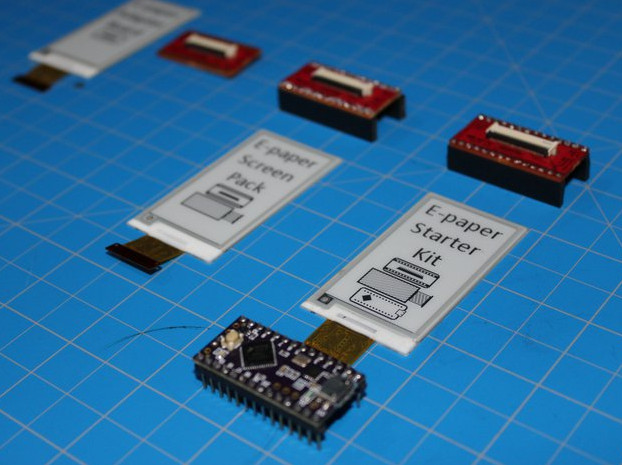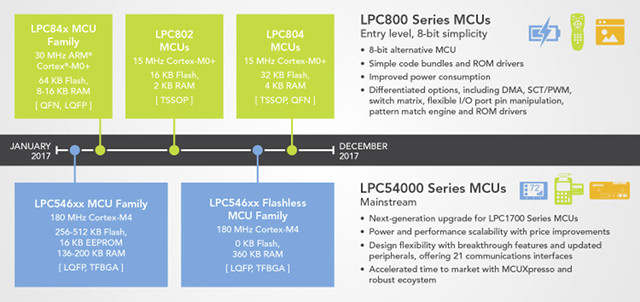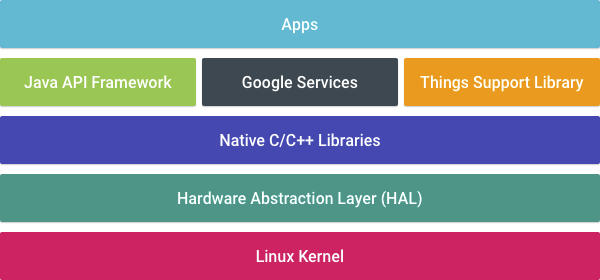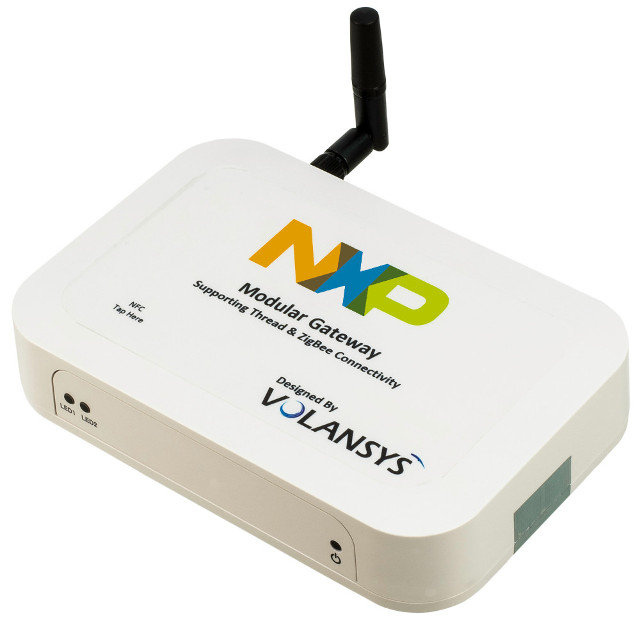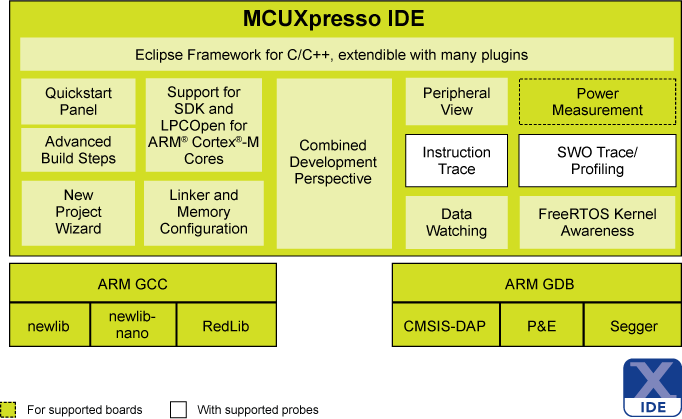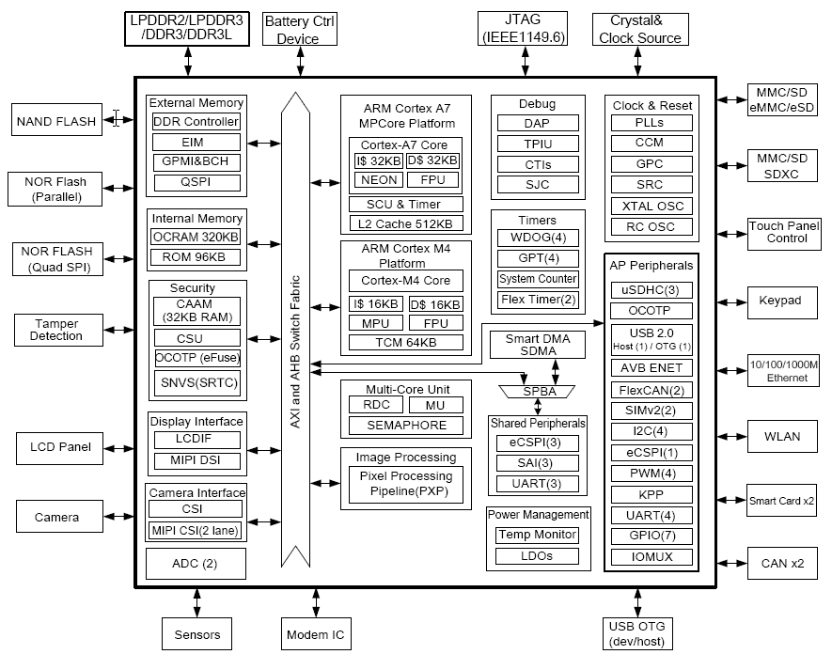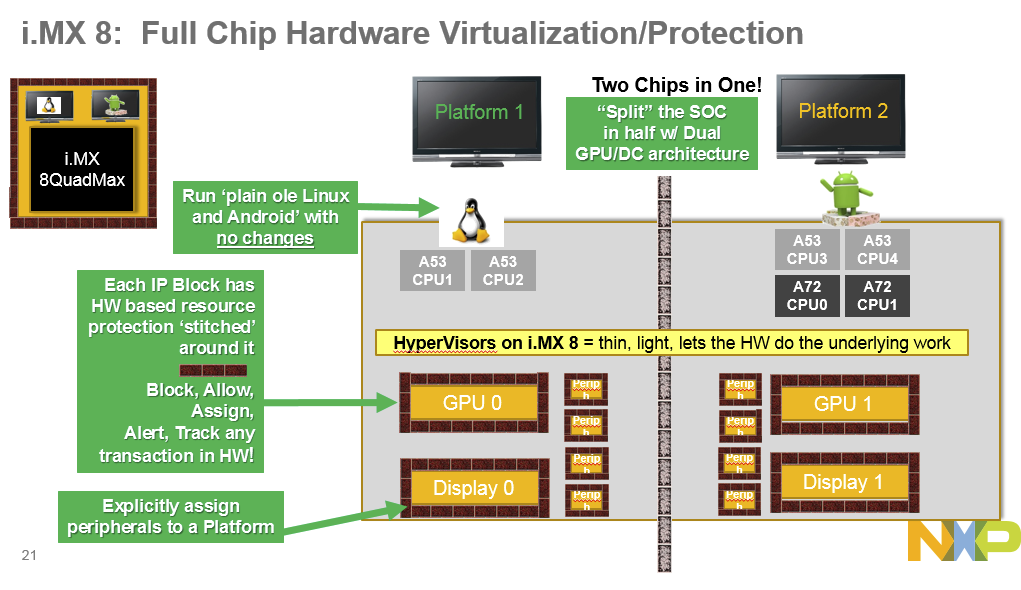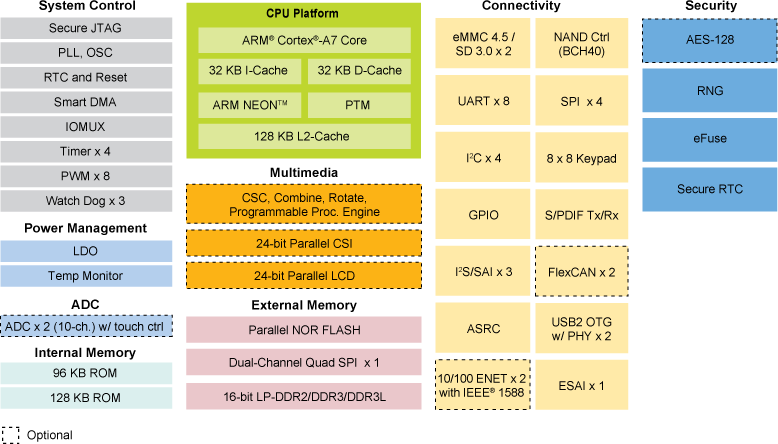Soniktek Electronics has designed the “e-Paper Shield Starter Kit” featuring Pervasive Displays’ E2215CS062 e-paper screen, and an adapter board to connect it to Teensy LC (Low Cost) board powered by NXP Kinetis L ARM Cortex M0+ microcontroller @ 48 MHz, or other 3.3V MCU boards supporting SPI. Adapter board & display specifications: Supports Pervasive Displays 2.15″ E2215CS062 e-paper screen with 208 x 112 resolution, no backlight required, fully sunlight-readable Communication protocol – SPI @ 3.3V Sensor – On-board thermometer with I2C interface Dimensions – Screen: 48 mm x 26 mm; adapter board fits into Teensy-LC module (36x18mm) The advantages of e-Paper display are that they don’t require power to maintain an image, and they can be read in sunlight, just like actual paper. I can’t remember having seen many – if any – low cost e-Paper development kits so far, and the project is open source hardware with design files and […]
NXP LPC Microcontrollers Roadmap for 2017 – LPC800 and LPC54000 Series
With the acquisition of Freescale, NXP now has both Kinetis and LPC ARM Cortex M micro-controller families. The company has kept selling both so far, but it’s unclear whether they’ll keep developing new Kinetis MCU family in the future. There’s no such doubt about LPC family with the company having published a 2017 roadmap for ARM Cortex M0+ based LPC 800 series, and ARM Cortex M4 based LPC54000 series. LPC800 series MCUs are promoted as 8-bit MCU alternatives, and three new models are expected next year: LPC84x ARM Cortex M0+ @ 30 MHz with 64KB flash, 8 to 16KB RAM available in QFN and LQFP packages. LPC802 ARM Cortex M0+ @ 15 MHz with 16KB flash, 2KB RAM available in TSSOP packages LPC804 ARM Cortex M0+ @ 15 MHz with 32KB flash, 4KB RAM available in QFN or TSSOP packages There will be new models of the more powerful LPC54000 […]
Android Things OS for the Internet of Things Supports Raspberry Pi 3, Intel Edison, and NXP Pico Boards
Google introduced Project Brillo a little over a year ago, an operating system based on Android, but with a smaller footprint optimized for Internet of Things applications. Brillo has now just become Android Things OS, with Google releasing a developer preview of Android Things working on Raspberry Pi 3, Intel Edison, and NXP Pico boards. The company has also updated the Weave platform to simplify connection of all types of devices to the cloud, and interaction with services like the Google Assistant. The Weave Device SDK currently supports schemas for light bulbs, smart plugs, switches, and thermostats, with more type of device supported in the future, as well as a mobile app API for both Android and iOS. Using an Android based OS instead of a pure Linux OS should make it easier for Android app developers to create smart devices thanks to the use of familiar Android APIs and […]
NXP Modular IoT Gateway Supports Thread, Zigbee, NFC, Bluetooth and WiFi Connectivity
NXP has just announced a modular IoT gateway solution for large node networks (>= 250 nodes) based on Volansys i.MX6UL system-on-module, supporting wireless communications protocols such as Thread, ZigBee, NFC through add-on modules, on top of Wi-Fi and Bluetooth 4.1. NXP Modular IoT Gateway specifications: SoM – Volansys i.MX6UL 200-pin SO-DIMM module with: SoC – NXP i.MX 6UL ARM Cortex A7 processor @ 528 MHz System Memory – 256MB to 1GB DDR3L RAM Storage – 1GB to 4GB NAND flash, optional 4GB to 16GB eMMC flash, EEPROM for device info PMIC, Mbit Ethernet PHY Wireless Connectivity Expansion Modules: PN7120 explorer board for NFC Kinetis KW41 module for Thread support JN5169 module for Zigbee support 2x MikroBUS headers Baseboard connectors / features: Storage – 1x micro SD slot Connectivity – 1x 10/100M Ethernet port, Murata WiFi 802.11 b/g/n & Bluetooth 4.1 + EDR module with external antenna connector USB – 2x […]
NXP Unveils MCUXpresso Development Tools for LPC and Kinetis Microcontrollers
After NXP bought Freescale, you had development tools for Freescale Kinetis MCUs such as Design Studio or Kenetis SDK, and others such as LPCXpresso for NXP LPC microcontrollers. The company has worked to unifying software and tools support between its ARM Cortex-M MCU families, and has now announced MCUXPresso software and tools for both NXP Kinetis and LPC MCUs. MCUXpresso unifies thousands of Kinetis and LPC microcontrollers under a set of compatible tools including MCUXpresso SDK – Open-source software MISRA-compliant development kit (SDK) with peripherals drivers, wireless & wired connectivity stacks, middleware, real-time OS, getting started guides, API documentation, and application examples. MCUXpresso IDE – Integrated development environment (IDE) for editing, compiling and debugging. It also integrates MCU-specific debugging views, code trace and profiling, multicore debugging, etc… Both free and professional edition of the IDE will be available, and LPCXpressor and previously Freescale Freedom & Tower platforms will be supported. […]
HMP, Real-Time Linux and Xenomai – A Look at Three Options to Develop Real-Time Linux Systems on Application Processors
This is a guest post about Heterogeneous Multicore Processing (HMP), Real-Time Linux, and Xenomai to develop real-time Linux systems written by Guilherme Fernandes, Raul Muñoz, Leonardo Veiga, Brandon Shibley, all working for Toradex. Introduction Application processor usage continues to broaden. System-on-Chips, usually powered by ARM Cortex-A cores, are taking over several spaces where small ARM Cortex-M, and other microcontroller devices, have traditionally dominated. This trend is driven by several facts, such as: The strong requirements for connectivity, often related to IoT and not only from a hardware point of view but also related to software, protocols, and security The need for highly interactive interfaces such as multi-touch, high-resolution screens, and elaborate graphical user interfaces; The decreasing price of SoCs, a consequence of its volume gain and new production capabilities. Typical cases exemplifying the statement above are the customers we see every day starting a product redesign upgrading from a microcontroller […]
Meet NXP i.MX8 Processor Families: i.MX 8 for High performance, i.MX 8M for Audio/Video & i.MX 8X for Low Power
Freescale and then NXP have been talking about i.MX8 processors for several years, and this spring unveiled i.MX 8 Multisensory Enablement Kit without giving much details about the processor except it would include both Cortex A72 & A53 cores. But NXP put out a press release yesterday about “Multisensory Automotive eCockpit Platform to Advance Multimedia Experiences in Future Cars” which appears to be the same news but with different words, except the content of the PR has more interesting bits such as: The new family, which is based on up to six 64-bit ARMv8-A technology processor cores and includes a HiFi 4 DSP, LPDDR4 and DDR4 memory support as well as dual Gigabit Ethernet with audio video bridging (AVB) capability, is designed to advance automotive dashboard graphics such as instrument clusters, infotainment visuals, heads-up displays, rear-seat screens and more. Capable of driving four HD screens with independent content or a […]
NXP i.MX 6ULL Cortex A7 Processor is the Latest Member of i.MX6 32-bit ARM Processor Family
Freescale first unveiled i.MX6 processor family at CES 2011. Since then NXP has acquired Freescale, and kept working on the processors and even recently unveiled NXP i.MX 6ULL Cortex A7 processor promising 30 percent more power efficiency than its nearest competitors, and designed for “cost-effective solutions for the growing IoT consumer and industrial, mass markets”. NXP i.MX 6ULL key features and specifications: CPU – ARM Cortex A7 core @ up to 528 MHz with 128KB L2 cache Memory I/F – 16-bit DDR3/DDR3L, LPDDR2 memory support Storage I/F – 8/16-bit parallel NOR flash / PSRAM, dual-channel Quad-SPI NOR flash, 8-bit raw NAND flash with 40-bit ECC, 2x MMC 4.5/SD 3.0/SDIO Port Display & Camera I/F Parallel LCD Display up to WXGA (1366×768) Electrophoretic display controller support direct-driver for E-Ink EPD panel, with up to 2048×1536 resolution at 106 Hz 8/10/16/24-bit Parallel Camera Sensor Interface Peripherals 2x USB 2.0 OTG, HS/FS, Device […]


